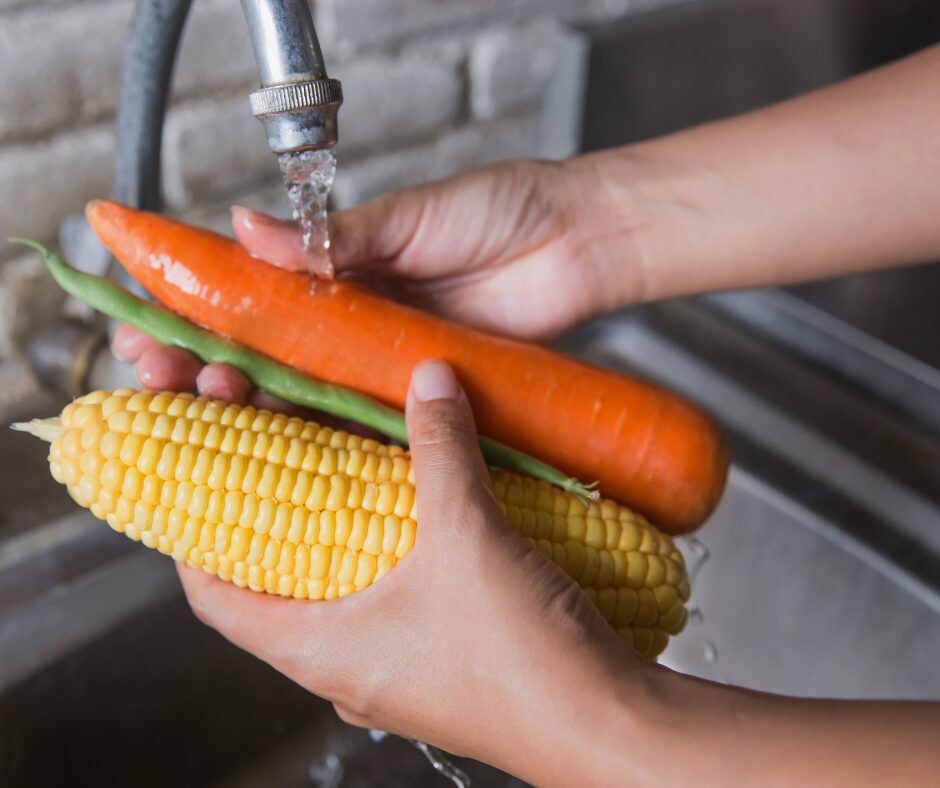A-Z of Public Health Topics
Safe food handling


Food poisoning is frequently caused by bacteria from foods that have been incorrectly stored, prepared, handled or cooked.
Food contaminated with food poisoning bacteria may look, smell and taste normal. If food is not stored properly, the bacteria in it can multiply to dangerous levels.
Handling and preparing food safely to stay well
Being surrounded by food every day makes it easy to forget that food should be handled and prepared safely.

Food poisoning is the name for the range of illnesses caused by eating or drinking contaminated food or drink. It can be caused by many different organisms including bacteria, viruses, parasites, or toxins produced by bacteria. Organisms or their toxins can be present in food or drink when not handled properly. In Australia food poisoning is quite common, affecting an estimated 4.1 million Australians each year.
Symptoms of food poisoning
Symptoms of food poisoning can include nausea, stomach cramps, diarrhoea, vomiting, fever or other symptoms and can last from hours to many days. Symptoms can start almost immediately after eating contaminated food or several hours or even days later. Food poisoning can be mild or sometimes very severe and lead to hospitalisation or, rarely, death. Those most at risk for food poisoning include pregnant women, people who are older, young children and people with chronic illness.
To prevent you and your loved ones from getting food poisoning, it’s important to pay attention to how you buy, store and prepare food. A number of actions you can take will greatly reduce the chances of getting food poisoning.
Keeping food safe can be quick and easy.
Here’s some key tips for actions you can take to keep food safe
Keep it cold
- the temperature ‘danger zone’ is between 5°C and 60°C where it is easiest for bacteria to grow
- keep perishable food refrigerated at 5°C or colder
- do not leave cooked or other perishable food at room temperature for long: if less than 2 hours, you can put it back in the refrigerator; between 2 and 4 hours, eat it straight away; after 4 hours, throw it away
- defrost and marinate foods in the fridge
- shop with a cooler bag and return home as soon as possible if foods are perishable
- if ever in doubt about the safety of a food, throw it out.
Keep it clean
- wash hands with warm soapy water and dry thoroughly before starting to prepare or eat food
- keep benches, kitchen equipment and tableware clean and dry
- don’t let raw meat juices drip onto other foods. Store raw meat at the bottom of your refrigerator
- use different cutting boards and knives for raw and cooked foods
- avoid making food for others if you’re sick or feeling sick.
Keep it hot
- cook foods to at least 70°C in the centre
- reheat cold food until steaming hot, and then keep hot food at least 60°C to avoid the temperature ‘danger zone.’
Check the label
- don’t eat food with an expired ‘use-by’ date as it may be unsafe
- always follow manufacturer storage and cooking instructions
- be allergy aware and if food is unpackaged or not well labelled, ask the seller for further information.
Food workers in the Western Public Health Unit catchment can test their food safety knowledge by doing this free training, DoFoodSafely – a free, non-accredited, online learning program provided by the Department of Health Victoria. DoFoodSafely is designed to enable you to understand how to safely work with, and handle, food in commercial settings.
